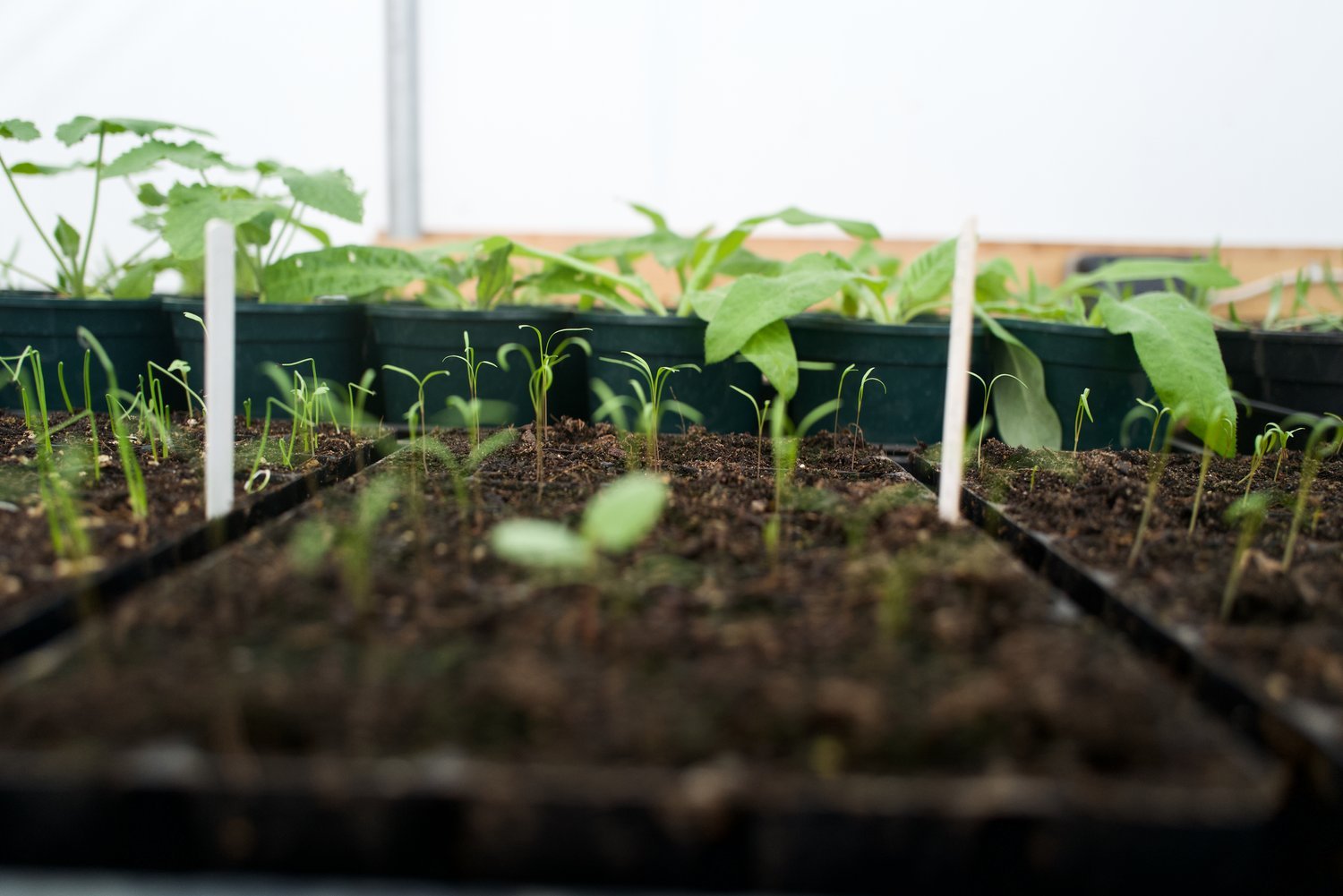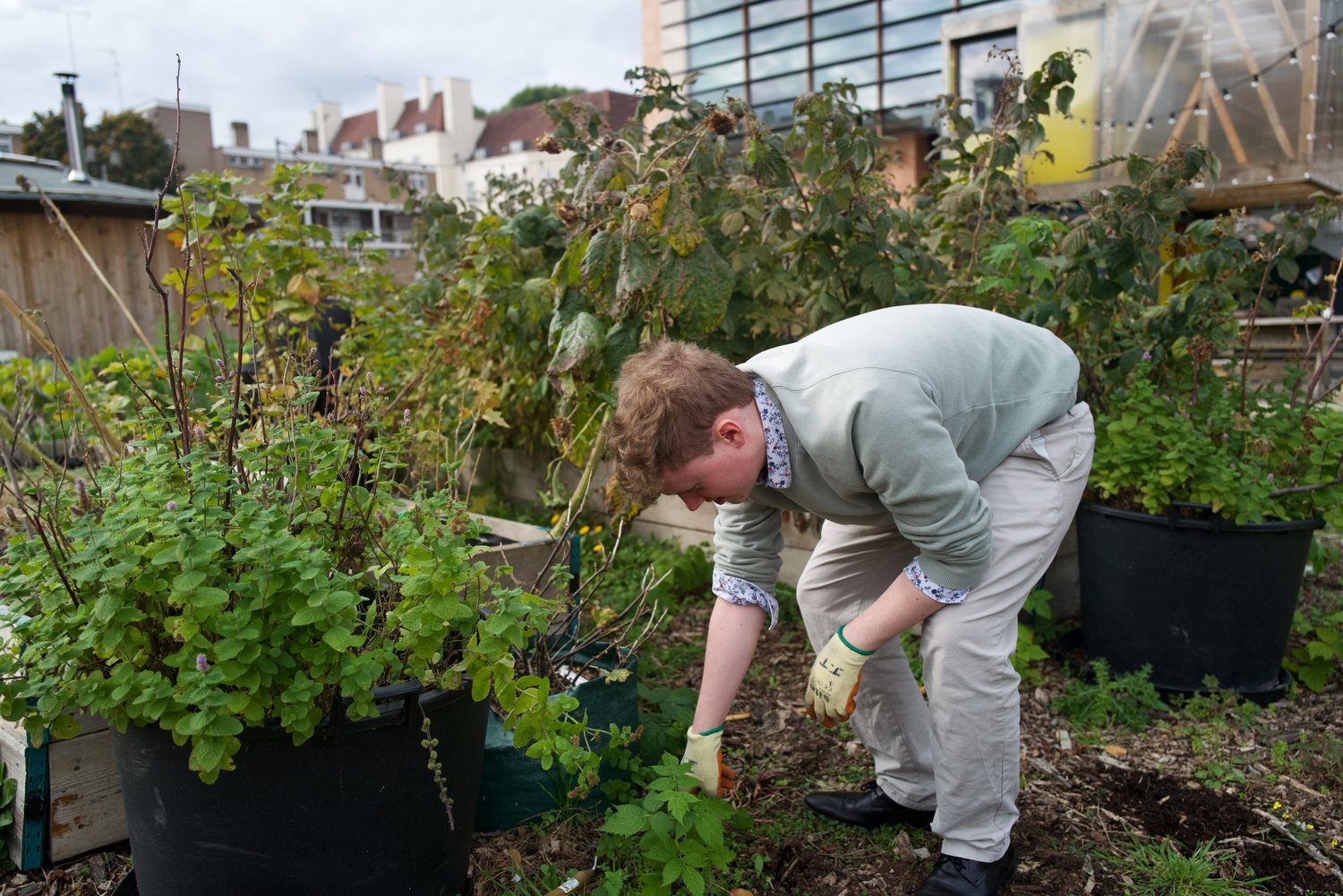How the Story Garden grows: Jan 2023
Winter is one of my favourite times in the Garden. I love spending wet afternoons in the cosy back office rifling through leftover seeds, misty mornings pruning soft fruit bushes and cold but sunny days turning the steaming(!!) compost. This year, we’re trialling reduced working hours and programme delivery during January and February to align with the rhythms of the seasons, spend time reflecting on the year that has passed and planning for the future.
Anyone who knows me knows I like a good plan. These short January days are the best for going through annual vegetable seeds from the growing seasons just gone, with all the memories of spring planting and summer harvests attached to them, reflecting on what crops worked best and researching new cultivars. Last year, kales, tomatoes and cucamelons did really well. We’ll have them back this year. Some of our pumpkin, squash and courgettes, as well as our runner beans and beetroot, struggled in the Story Garden last year. We’ll be experimenting with different cultivars this time round.
Once I know what we’re going to grow, I update our crop rotation and planting plans accordingly. These plans will guide our planting throughout the year, and ensure that our raised beds are full of healthy plants and soil all year round. When the seeds arrive, I organise them into drawers by the month they’ll be sown. I’ve found this works best for community garden settings, where many different people use the seeds and need to know what to sow when, and at a glance!
Another great winter job is fruit tree and shrub pruning. We grow a range of top fruit (or trees) and soft fruit (or bushes) in the Story Garden. Examples of top fruit are plum, apple, pear, quince, apricot and peach and examples of soft fruit are raspberry, blackcurrant, redcurrant, gooseberry and jostaberry. All of the above (except plum, which must be pruned in summer), must be pruned over winter while the plants are dormant.
The first step of pruning is always to remove any dead, damaged or diseased parts, cutting at an angle with sharp tools to mitigate the risk of infection and allow water to drain off, rather than sit on, open wounds. Next comes the more satisfying work of shaping the plant. Being careful not to take off too much, I love the delicate task of removing old growth back to wood buds (less plump and furry than a fruit bud!) growing in the directions I want, and slowly shaping a tree or bush into an optimum shape for it to thrive. My highlight, and the task I save until last, is the blackcurrant bush. Blackcurrants must be sculpted into particularly satisfying goblet shapes, made all the more glorious by the perfume given off by their buds and branches as well as the promise of their delicious fruits to come.
Tips and tricks:
Start planning what you’d like to grow this year, and source the seeds and materials (compost, pots, labels, canes etc) you’ll need. If you’re growing at home or on an allotment, you won’t need to plan in the same way as us at the Story Garden, and it won’t hurt to hold off until Saturday 25 February for our Seed Swap event!
Pruning is a good opportunity to remove any mummified apples, pears or plums, to prevent rot and disease spreading.
Tools you might want for pruning are: secateurs, loppers, tree loppers and a pruning knife. For practical support with tools, including storage and maintenance, join our Winter Wellbeing session on Wednesday 22 February, 3-5pm!






The everyday often gets overlooked, doesn’t it? We walk past spaces, objects, and people without a second thought—but these small, everyday moments hold the power to create real change.